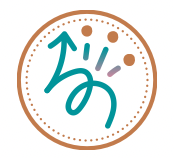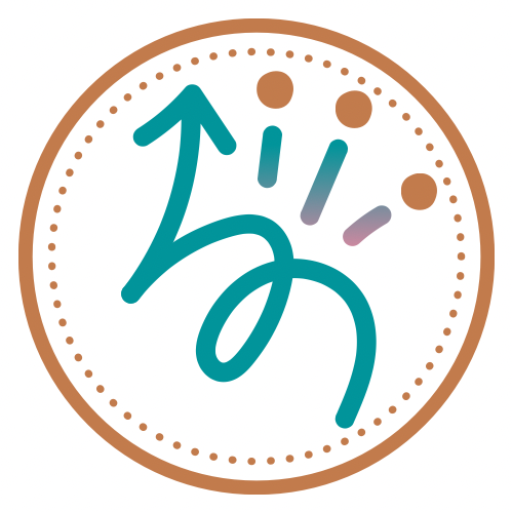Orange and Clove Pomanders: A Fine Motor Project
Homemade clove and orange pomanders smell amazing this time of year! Show off your creativity with friends and family this holiday season for a fun fine motor strengthening project for all to enjoy. Or anytime of year really. Only a few simple ingredients and items are needed so let’s get started on these lovely fine motor pomanders.

This content is not intended as a substitute for medical advice, diagnosis, or treatment. Always seek the advice of your physician, therapist, or other medical professional regarding a medical condition or treatment. This content is for informational purposes only. See full disclosure here.
All links in this post are non-affiliate links, and are provided for your convenience.
Happy Holidays
Last year at the holidays, we first made today’s project when visiting family. These amazing smelling orange and clove pomanders are a great fine motor strengthening project for the whole family to enjoy. Myself, my kids, and the grandparents all created our own pomander design. We sat around the table, listened to stories from my dad’s childhood (he is the best storyteller!) and enjoyed our evening together.
What Is a Pomander?
A pomander is a decorative ball or case that contains scented objects and can be used as a decorative piece. In our case, we will be simply piercing oranges with cloves as we focus on specific fine motor skills while creating this lovely holiday and gorgeously fragrant decor.
A Brief History

Pomanders and the Holidays
Orange and clove pomanders are most often made around the holidays, but can be made any time of year. Pomanders make a great fine motor project plus they smell so good in my opinion.
These are great to make whether you celebrate Hanukkah, Christmas, Kwanzaa, St. Nicholas Day, the Winter Solstice, Yule, or no holiday at all. This is a wonderful project for just about any time of year. Have I mentioned how good it smells?
Today’s Fine Motor Project
Today we are using mandarin cutie oranges instead of the full size oranges. The full size oranges have a thick peel while the cutie oranges make it easy to push the clove through without hurting your fingers. Plus, I recommend using either a toothpick or skewer to poke holes making it easier on the fingers. A skewer will make a larger hole compared to the toothpick, making pushing in the cloves even easier.

Occupational Therapy Fine Motor Focus
As an occupational therapist, I love projects that not only can be done among friends and family, but also one that brings together a variety of fine motor and upper body skills as well.
Today’s project focuses on:
- Bilateral coordination
- Crossing the midline
- Fine Motor Strengthening
- The pincer grasp
- Isolating the index finger

Bilateral Coordination
Bilateral coordination is the ability to use both sides of the body during an activity in a controlled and organized way. Also known as bilateral integration, this important skill is used throughout the day, every day to perform both fine motor and gross motor tasks.
Throughout today’s project, you will see the skills of bilateral coordination being used. Focus on using both hands together in a smooth and coordinated action so that they are supporting each other through the tasks. Start off with massaging the cutie orange with both hands together, squeezing it as you go. This will help soften the orange before placing cloves. Plus, it works on bilateral coordination and upper body strengthening at the same time. Poking holes and placing a clove in the orange is also a great bilateral coordination activity, more details on this below.

Crossing The Midline
Crossing the midline or crossing midline is the ability to reach across the midline of the body to the other side of the body. Individuals who have difficulty crossing the midline will often turn the whole body to the side to reach for an object or perform some other task.
Focus on crossing the midline by placing cloves in various places around the countertop. This will encourage them to reach in various directions, extending the upper body while crossing the midline when reaching for an object.
Fine Motor Strengthening
So many aspects of this holiday project naturally focuses on fine motor strengthening. From massaging the orange to soften it to making holes and pushing the cloves into the orange, fine motor strengthening is seen throughout this project. Focus on using the 3-prong grasp when using either a toothpick or skewer (see picture below). When placing the cloves focus on the pincer grasp (see picture below). See the next section below for more information on the pincer grasp as well as the 3-prong grasp. And make sure to use the index finger to push the cloves all the way in instead of using the middle finger (more on isolating the index finger below).


The Pincer Grasp + The 3- Prong Grasp
The pincer grasp uses the tips of the index finger and thumb to pick up small items such as coins, small pieces of paper, or cheerios. This important fine motor skill is used everyday throughout the day.
Focus on using the pincer grasp to pick up the cloves off the countertop and while placing the cloves into the hole. Remove the cloves and put them in again as an added fine motor strengthening bonus using the pincer grasp.
Use the 3- grasp grasp, or three point grasp while making holes with the toothpick or skewer as seen in the picture above. This same grasp is seen in a functional tripod grasp.

Isolating The Index Finger
Finger isolating is the ability to move a certain finger independently from the rest of the hand. This fine motor skill is an important stage in grasp development. Finger isolation helps to develop a good pencil grasp, helping to control the pencil when writing and drawing.
Today, we are focusing on isolating the index finger to push the cloves into the cutie orange. Make sure the middle finger is not used instead of the index finger to push in the cloves. If the middle finger is seen actively pushing the cloves encourage the use of the index finger instead. Often children who use the middle finger in place of the index finger to actively manipulate objects, may often benefit from fine motor strengthening exercises.
How Long Do Pomanders Last?
Pomanders will last at least one week, but in my experience, my pomanders lasted two weeks plus. You can extend of the life of these amazing smelly good fine motor decoration by keeping it refrigerated, and making sure the orange is as fresh as possible. Keep an eye on your pomanders for when they start to go bad.
If you would like to preserve the pomanders and use them year after year, check out this tutorial for her easy, no oven needed, process for drying out the pomanders.
What Type of Orange Should Be Used?
For this project, I recommend using mandarin cutie oranges instead of a full size orange. The peel on the cutie oranges is much thinner than a full size orange. The thin skin makes pushing the clove through easier on the fingers although of course, you can use the full size oranges as well if you choose.
Using A toothpick or Skewer To Make Holes
I recommend using either a toothpick or skewer to make small holes the approximate length of the clove base. Although this is optional, it will make it even easier to push the clove in so that the head is flush with the peel.
A toothpick will provide a little more resistance which will require more fine motor strength to push the clove in rather than the skewer. If you need to make it easier, consider using a skewer. The hole from the skewer will be a bit wider and therefore making it even easier push the clove in. If the clove causes too much pressure on the finger, consider using a thimble to protect the index finger.
Please use caution when using a toothpick or skewer to avoid injuries.

Pomanders in the Shower
Thanks to the recommendation of one of my dear sweet family members, for an extra lovely bonus, place the pomander inside the shower for an added natural fragrance. The combination of the steam and the smell of the pomander, made my shower smell so lovely first thing in the morning. It was a great way to start the day! Place the fine motor pomander in or on some sort of container in case the color in the cloves begins to run.
Special Considerations
- This project is not intended for anyone under the age of 3 years or for anyone who chews on non-food items due to choking hazards.
- As with any sharp objects, please use caution when using a toothpick or skewer to avoid injuries.
How To Make an Orange and Clove Fine Motor Pomander
Materials
- Mandarin cutie oranges (recommended) or regular sized orange (see note above)
- Rubber band, optional
- 1 box of whole cloves, possibly more if you plan to make multiple pomanders
- Skewer or toothpick, optional
- Napkin or towel
Instructions
- Soften the skin of the orange by kneading or massaging the orange gently all over using both hands.
- Create your pomander design using a toothpick or skewer by creating holes the length of the clove’s base. Looking for straight lines? Place a small rubber band around the orange as a guide when needing a straight edge. Remove or adjust to another position when you are done.
- Next, place a clove inside each hole. Wipe away any juices as needed with a napkin or towel.
- Once you have completed your design with the cloves inserted, you are done. Smell and enjoy.
- If you would like to dry them out, check out this tutorial by Kelly Elko using the cloves and a paper bag to dry out the pomander.
Have you signed up for the monthly DIY Newsletter? You can also find me on Pinterest.
Here Are Other Fine Motor Holiday Projects You Might Enjoy










